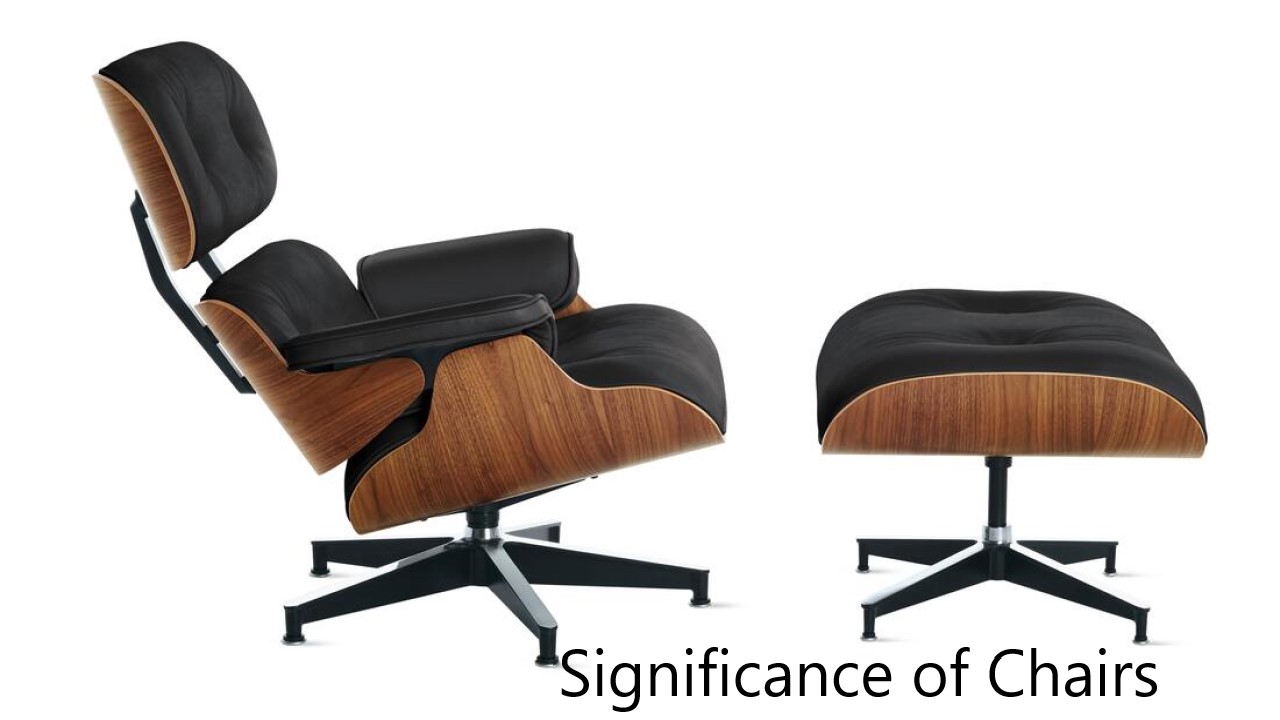Chairs are one of the most ubiquitous pieces of furniture in the world, serving both functional and aesthetic purposes across various cultures and settings. They are designed primarily for sitting, providing support for the seated person’s back and sometimes arms. Over the centuries, chairs have evolved significantly in terms of design, materials, and use, reflecting changes in technology, fashion, and ergonomics.
History of Chairs
The concept of the chair has ancient origins. Early examples can be traced back to the Egyptians around 2680 B.C., who used chairs as symbols of status and authority, often elaborately decorated with ivory, ebony, and precious metals. In ancient Greece and Rome, chairs were used by the elite, often featuring intricate carvings and artistic designs.
During the Middle Ages in Europe, chairs remained symbols of rank and were used by royalty and the clergy. The common people typically sat on stools or benches. It wasn’t until the Renaissance that chairs became more widespread, reflecting a shift toward greater comfort and individualism in furniture design.
Types of Chairs
Chairs come in a wide variety of types, each designed for specific purposes and settings:
- Ihms Chair: Designed to be used at a dining table, these chairs often feature a straight back and no armrests to facilitate ease of movement.
- Armchairs: These chairs have armrests and are typically more comfortable, making them suitable for relaxation in living rooms or offices.
- Recliners: These chairs can recline to various angles, providing additional comfort for lounging or even sleeping.
- Rocking Chairs: Mounted on rockers, these chairs can sway back and forth, providing a soothing motion ideal for relaxation or nursing babies.
- Office Chairs: Designed for use at a desk, these chairs often feature ergonomic designs with adjustable height, backrests, and armrests to promote proper posture during long periods of sitting.
- Accent Chairs: These chairs are often used to add a decorative element to a room, featuring unique designs or vibrant colors.
Materials and Construction
Chairs are constructed from a variety of materials, each offering different benefits and aesthetics:
- Wood: A traditional and versatile material, wood is used for its durability and natural beauty. Common types of wood used in chair-making include oak, maple, and cherry.
- Metal: Often used for its strength and modern appearance, metal chairs can be made from aluminum, steel, or wrought iron. Metal chairs are common in outdoor settings and industrial-style interiors.
- Plastic: Lightweight and often inexpensive, plastic chairs are versatile and can be molded into various shapes and colors. They are widely used in schools, cafeterias, and casual dining settings.
- Upholstered: Chairs with fabric or leather coverings provide additional comfort and style. The upholstery can range from simple and functional to luxurious and decorative.
Ergonomics and Design
Modern chair design increasingly focuses on ergonomics, which is the study of how to design furniture that supports the human body in a healthy and comfortable way. Ergonomic chairs, especially in office settings, are designed to reduce strain on the spine, improve posture, and prevent musculoskeletal problems. Features such as lumbar support, adjustable seat height, and armrests are critical in these designs.
Cultural and Aesthetic Significance
Beyond their functional use, chairs hold cultural and aesthetic significance. In many cultures, the design and craftsmanship of chairs are a reflection of artistic expression and societal values. For example, the iconic Eames Lounge Chair, designed by Charles and Ray Eames in 1956, is celebrated for its innovative design and has become a symbol of mid-century modern furniture.
Chairs also play a role in rituals and ceremonies. In many traditions, the chair is a seat of honor, such as the throne for royalty or the chair of a university dean.
Conclusion
Chairs are more than mere objects for sitting; they encapsulate a blend of functionality, design, and cultural significance. From ancient thrones to modern ergonomic office chairs, they continue to evolve, reflecting advancements in materials, technology, and aesthetics while addressing the human need for comfort and support.







